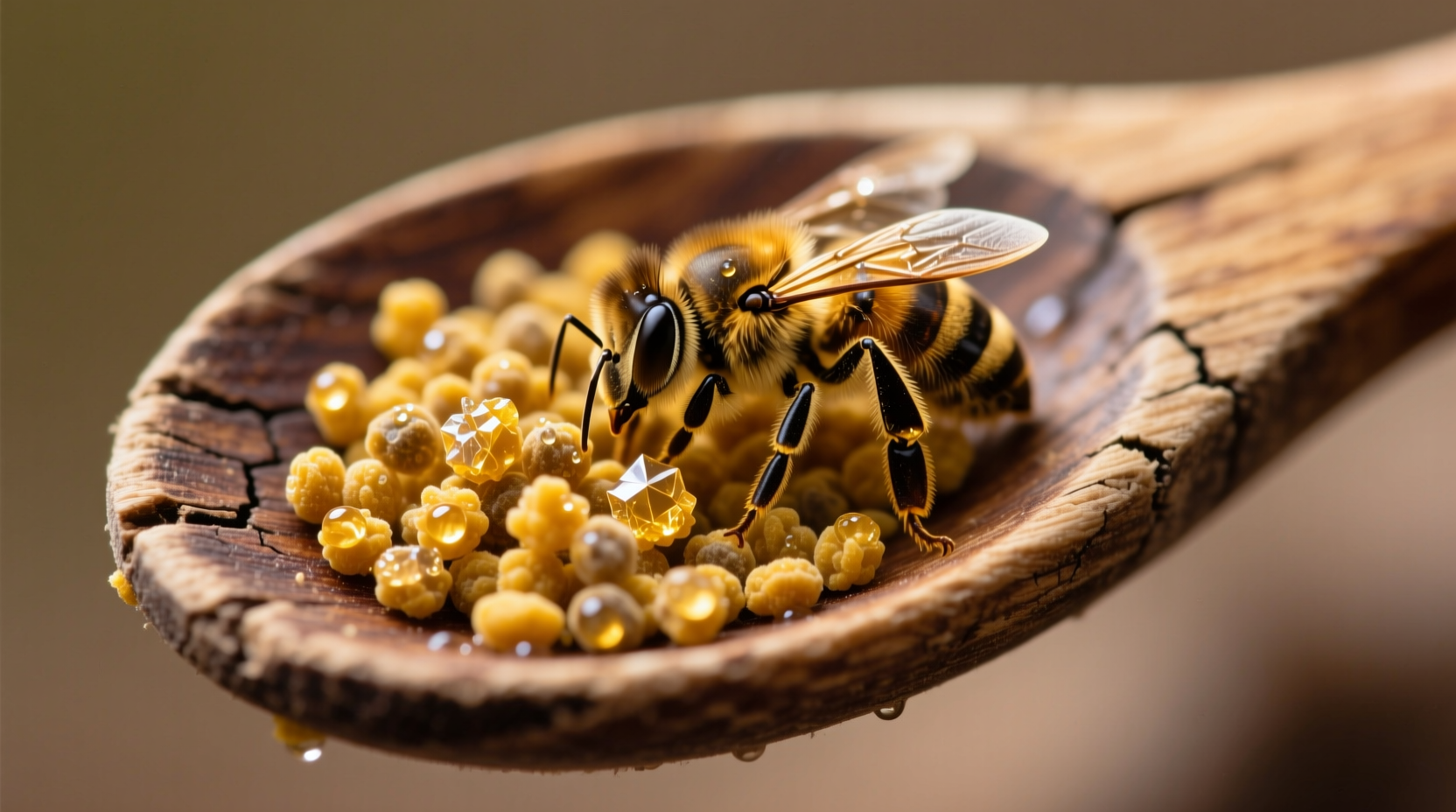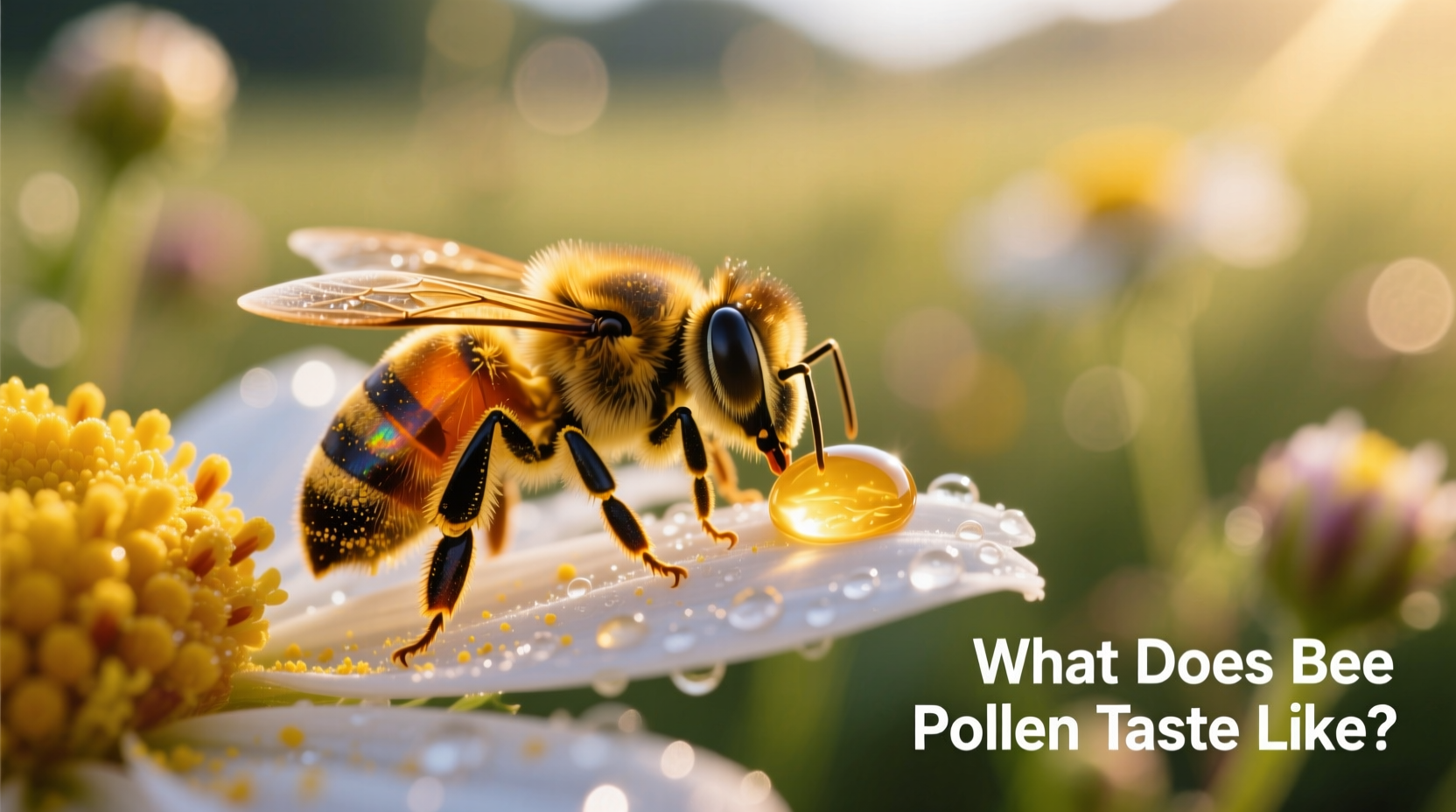If you've ever wondered what bee pollen tastes like before adding it to your morning smoothie or yogurt, you're not alone. This nutrient-dense superfood has gained popularity for its health benefits, but its unique flavor profile often surprises first-time users. Understanding exactly what to expect can help you incorporate it successfully into your diet without unpleasant surprises.
The Basic Taste Experience of Bee Pollen
When you place a small amount of bee pollen on your tongue, you'll first notice its distinctive granular texture—tiny spheres that feel similar to poppy seeds but slightly softer. As you chew, these granules release their flavor, which most people describe as:
- Floral and slightly sweet - reminiscent of fresh honey with floral notes
- Mildly earthy - with subtle grassy or herbal undertones
- Sometimes tangy - a slight citrus-like note in certain varieties
- Occasionally bitter - particularly in darker-colored pollen
The aftertaste is typically clean and refreshing, without the lingering bitterness found in some supplements. This complex flavor profile makes bee pollen unlike any other food you've likely tasted before.

Why Bee Pollen Tastes Different Based on Floral Source
One of the most fascinating aspects of bee pollen is how dramatically its flavor changes depending on which flowers the bees visited. Unlike mass-produced supplements that maintain consistent flavor, natural bee pollen varies seasonally and regionally.
| Floral Source | Color | Taste Profile | Common Regions |
|---|---|---|---|
| Rose | Pink to red | Mildly sweet, floral, slightly tangy | Temperate climates worldwide |
| Sunflower | Bright yellow | Nutty, slightly bitter, earthy | North America, Europe |
| Alfalfa | Light yellow | Mildly sweet, grassy, herbal | North America, Australia |
| Wildflower | Varied | Complex blend, often with citrus notes | Most regions |
This variation isn't just interesting—it's scientifically documented. According to research published in the Journal of Agricultural and Food Chemistry, bee pollen's chemical composition varies significantly based on floral origin, directly affecting its sensory properties (Steffan et al., 2017). The study analyzed over 100 pollen samples and found distinct flavor compounds corresponding to different plant sources.
How to Taste Bee Pollen Properly
Many people make the mistake of consuming too much bee pollen too quickly, which can overwhelm the palate. Here's how to properly experience bee pollen's flavor:
- Start with just 5-10 granules on your tongue
- Let them sit for 10-15 seconds before chewing
- Chew slowly to release the full flavor profile
- Notice the progression from initial taste to aftertaste
- Follow with water to cleanse your palate between samples
This method allows you to appreciate the nuanced flavor development. Most culinary experts recommend tasting different varieties side by side to understand the spectrum of possible flavors.
Making Bee Pollen Palatable: Practical Usage Tips
If you find the taste challenging at first, don't worry—there are several effective ways to incorporate bee pollen into your diet while minimizing its distinctive flavor:
Best Flavor Pairings
Certain ingredients naturally complement bee pollen's flavor profile:
- Natural sweeteners - Raw honey, maple syrup, or dates mask any bitterness
- Citrus elements - Lemon or orange zest enhances the floral notes
- Strong spices - Cinnamon, ginger, or cardamom balance the earthiness
- Creamy bases - Yogurt, smoothies, or nut butters help distribute the granules
Recommended Incorporation Methods
For those new to bee pollen, these techniques make the transition easier:
- Start with just 1/4 teaspoon daily, gradually increasing to 1-2 teaspoons
- Mix with strongly flavored foods like dark chocolate or tart berries
- Blend into smoothies with banana and almond butter
- Sprinkle on top of oatmeal with cinnamon and honey
- Stir into plain yogurt with a drizzle of raw honey
Professional chefs often recommend freezing bee pollen before use, as the cold temperature slightly numbs the palate and makes the flavor less intense during initial consumption.
Understanding Taste Preferences: Context Matters
Consumer reactions to bee pollen's taste vary significantly based on cultural background and previous food experiences. A 2020 sensory study published in Foods journal analyzed taste preferences across different demographics:
- People accustomed to bitter greens (like arugula or dandelion) often appreciate bee pollen's earthy notes
- Those with experience eating raw honey typically find the floral notes familiar and pleasant
- Individuals who primarily consume highly processed foods may find the natural bitterness challenging
- Cultural background influences acceptance of complex, multi-layered flavors
This research, conducted by food scientists at the University of California, Davis (Chen & Rodriguez, 2020), found that taste acceptance significantly increased after just 7-10 days of regular consumption as palates adapted to the unique flavor profile.
Does Taste Indicate Quality?
Many consumers mistakenly believe that a more pleasant taste indicates higher quality bee pollen. In reality, flavor intensity and profile don't necessarily correlate with nutritional value.
According to guidelines from the American Beekeeping Federation, quality assessment should focus on:
- Moisture content (should be below 8%)
- Absence of contaminants
- Proper storage conditions
- Color consistency within batches
Some of the most nutritionally dense pollen varieties have stronger, more complex flavors that might be less immediately appealing to new users. Don't let initial taste preferences guide your quality assessment—focus on proper sourcing and storage instead.
When Taste Might Signal a Problem
While bee pollen naturally has a distinctive flavor, certain taste characteristics might indicate quality issues:
- Excessive sourness - could indicate fermentation or spoilage
- Moldy or musty taste - sign of improper storage or moisture exposure
- Chemical aftertaste - possible contamination
- Complete absence of flavor - may have been heat-treated, destroying enzymes
Fresh, high-quality bee pollen should have a clean, vibrant flavor profile without off-notes. If you detect any concerning tastes, discontinue use and contact the supplier.











 浙公网安备
33010002000092号
浙公网安备
33010002000092号 浙B2-20120091-4
浙B2-20120091-4